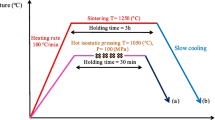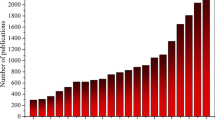Abstract
Apart from a great variety of shaping possibilities powder metallurgical techniques offer integration of foreign elements for permanent and variable data storage or embedding of elements with sensory features in structural parts. By integrating foreign elements as single parts arranged in matrices or traces of foreign powders information like brand, serial numbers or other codable data can be stored in a part. Integrated sensor elements can be used to monitor loading conditions like strains and stresses or temperatures during the life-cycle of technical parts. In this research work foreign elements are embedded in the powder prior to compaction. The powder is compacted to a green body and sintered afterwards. During compaction the foreign elements interact with the base material and change their position according to the deformation of the surrounding powder. Finite element analyses are carried out in order to detect a suitable initial arrangement of foreign elements and to ensure their correct position at the end of the compaction. Furthermore, the interface conditions between the base powder and the foreign elements are of interest. Therefore, experimental investigations are carried out with magneto-elastic sensors consisting of NiFe-layers on different substrates such as aluminum, Silicon and aluminum oxide with aluminum and Steel powder. The bonding quality is analyzed by metallographic investigations. By means of X-ray and computed tomography (CT) the position of the foreign elements within the parts is controlled, which is vital for a correct determination of loading conditions and for the read-out of stored information.












Similar content being viewed by others
References
Thümmler F, Oberacker R (1993) Introduction to powder metallurgy. The institutes of materials, London. ISBN 090171626X
Schatt W (2007) Pulvermetallurgie: technologien und werkstoffe. Springer, Berlin. ISBN 10-354023652-X
German RM (1994) Powder metallurgy science. ISBN 1-878954-42-3
Coube O, Riedel H (2000) Numerical simulation of metal powder die compaction with special consideration of cracking. Powder Metall 43(2):123–131
Nabil N (2008) ABAQUS 6.9 Theory Manual. Abaqus Inc
Kraft T, Coube O, Riedel H (2001) 3. deutschsprachiges ABAQUS Anwendertreffen, Freiburg, In: Küssner M (ed) ABACOM Software GmbH, Aachen
Riedel H (1997) Rechnerisch optimiertes Pressen und Sintern: Formgenaue und rissfreie Teile. Schweizer Maschinenmarkt 20:54–56
Behrens B-A, Bouguecha A, Hanini K (2004) Beschreibung des Verfestigungsverhaltens von Aluminiumpulver im Drucker-Prager-Kappenmodell. UTF Sci 2:1–4
Behrens B-A, Seidel H-J, Lange F, Kammler M (2011) Vergleichende experimentelle und numerische Untersuchungen zum schwingungsüberlagerten Pressen zweier Pulvermaterialien. Mat-wiss u Werkstofftech 42(8):705–711
Behrens B-A, Bouguecha A (2012) Numerische und experimentelle Untersuchungen zum Matrizenpressen und Sintern von Aluminiumpulver. Mat-wiss u Werkstofftech 43(6):511–519
Acknowledgments
The results presented in this paper are obtained within the scope of the Collaborative Research Center 653 “Gentelligent Components in their Lifecycle” in the subproject “Sintering Gentelligent Parts from Metal Powder”. The authors would like to thank the German Research Foundation (DFG) for funding this project. The authors would also like to thank the Institute of Materials Science (IW), Leibniz Universitaet Hannover (LUH) for producing the X-ray images shown in this paper.
Author information
Authors and Affiliations
Corresponding authors
Rights and permissions
About this article
Cite this article
Behrens, BA., Vahed, N. & Kammler, M. Functionalisation of PM components by integration of inherent data carriers and sensory elements. Prod. Eng. Res. Devel. 7, 123–129 (2013). https://doi.org/10.1007/s11740-012-0428-0
Received:
Accepted:
Published:
Issue Date:
DOI: https://doi.org/10.1007/s11740-012-0428-0




